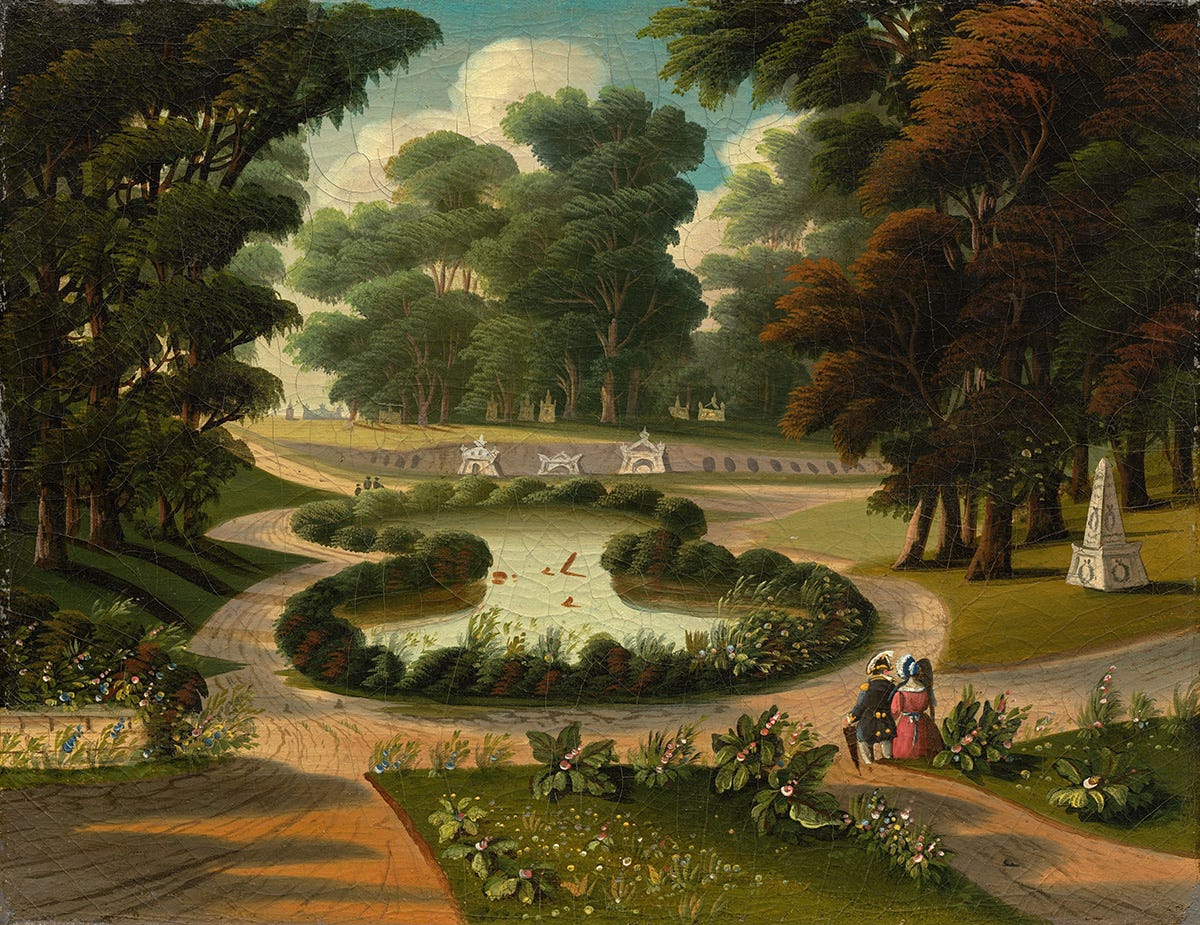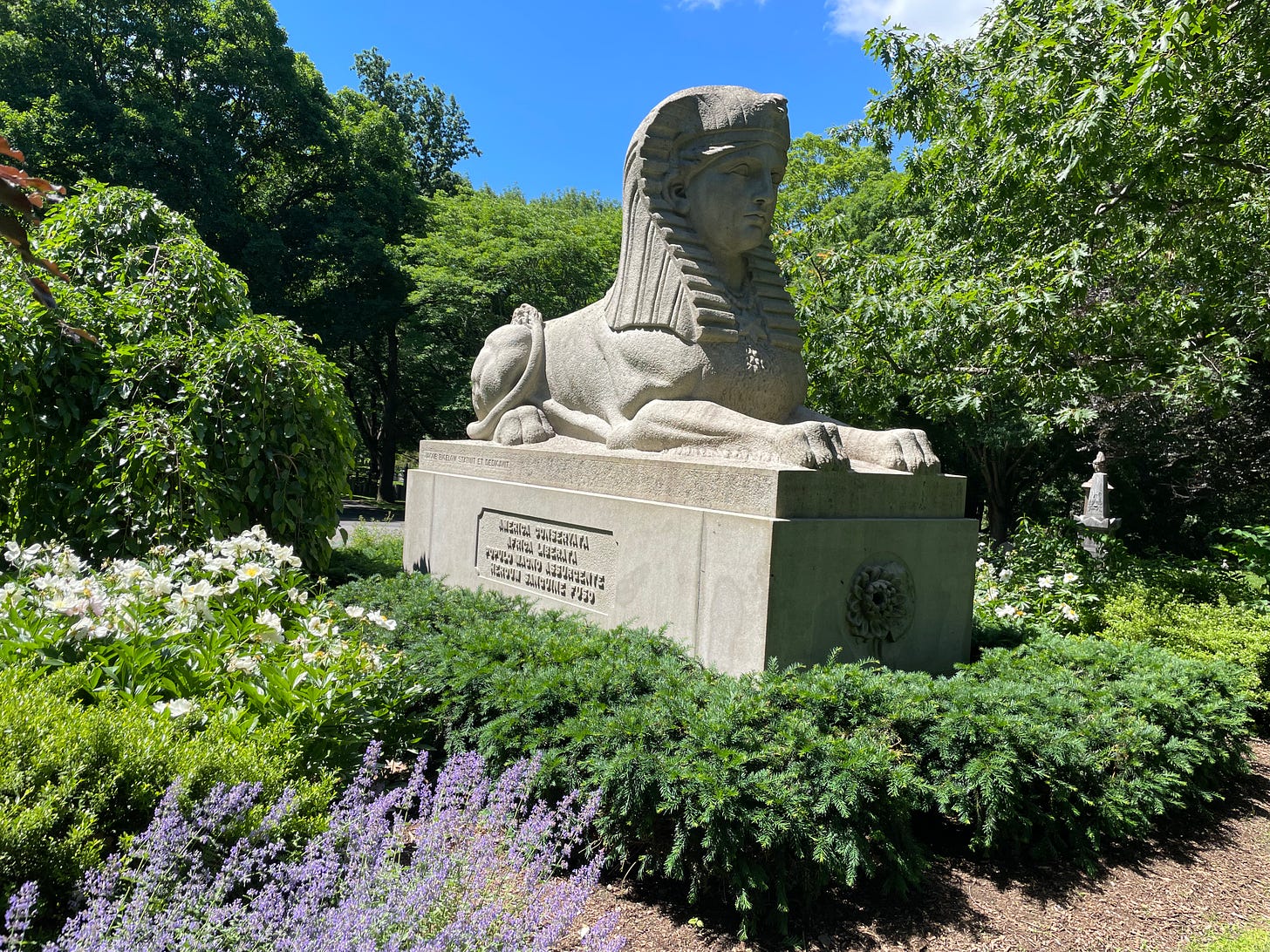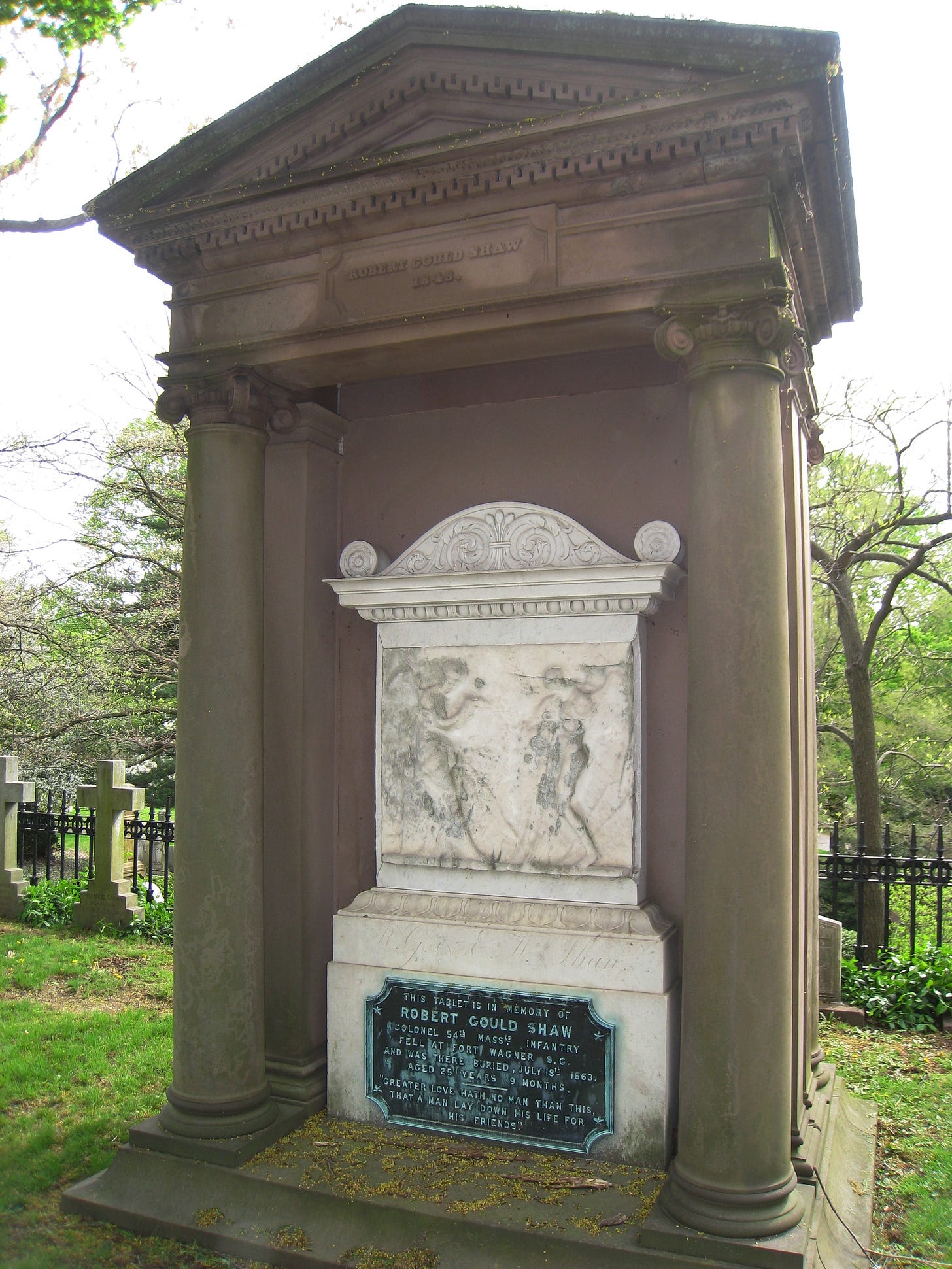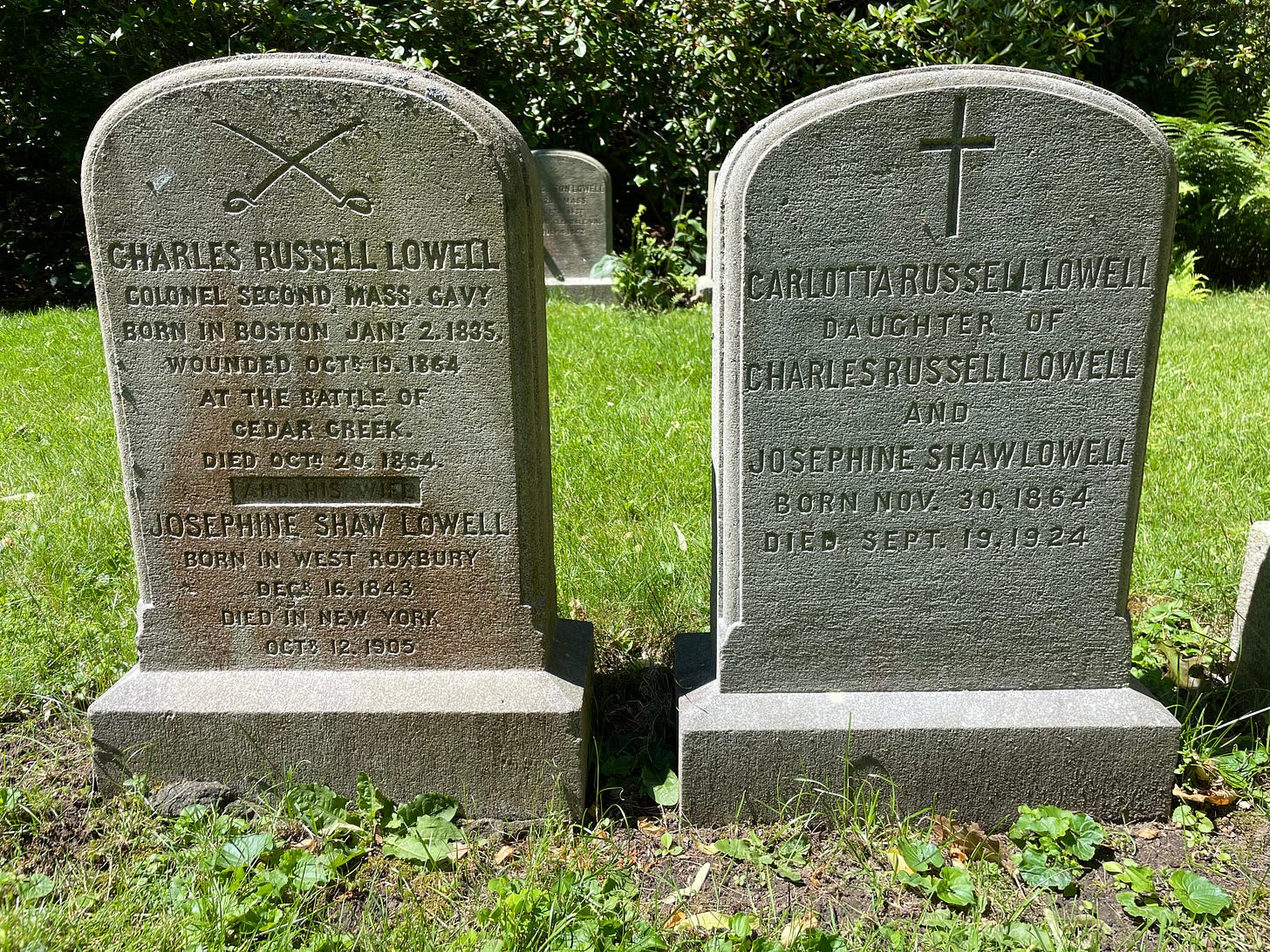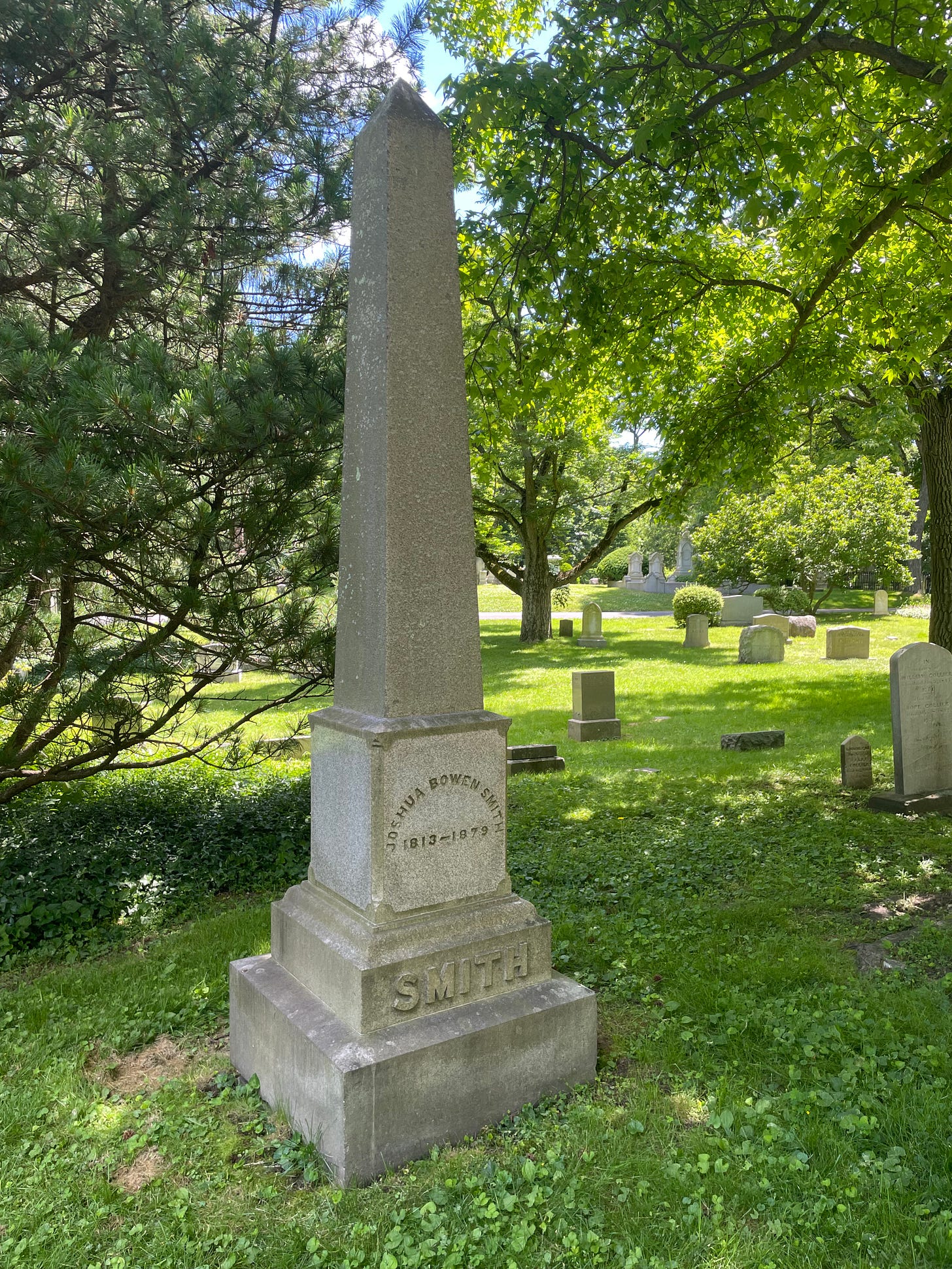
It’s one of my favorite places to visit in the Greater Boston area. You can always find peace, new history to explore, and plenty of places to just sit, take in the view, and reflect.
My visit, however, today was in preparation for a tour that I will be leading later this week for a group from the George and Ann Richards Civil War Center at Penn State. It’s one of a number of stops over the course of two days that will explore the history and memory of the Civil War in Boston.
Mount Auburn Cemetery is an ideal place to explore this subject. The highlight of any visit is Martin Milmore’s Sphinx—one of the most unusual Civil War memorials. The Sphinx was commissioned by physician and Mount Auburn founder Jacob Bigelow, who was looking for a memorial that would commemorate both Union and Emancipation.
Why a memorial in the form of a sphinx, you ask?
Bigelow offered his thoughts just prior to the memorial’s dedication in 1872:
It essays to express the present attitude and character of a nation perhaps as far remote in time from the building of the pyramids as was that event from the earliest constructions attempted by man. The same ideal from which, as it were, on the dividing ridge of time, has looked backward on unmeasured antiquity, now looks forward to illimitable progress. It stands as a landmark of a state of things which the world has not before seen—a great, warlike and successful nation, in the plentitude and full consciousness of its power, suddenly reversing its energies, and calling back its military veterans from bloodshed and victory to resume the still familiar acts of peace and good will to man. What symbol can better express the attributes of a just, calm and dignified self-reliance than one which combines power with attractiveness, the strength of a lion with the beauty and benignity of woman?
Historian Joy M. Giguere laid out her own interpretation of the memorial in an essay in the March 2013 issue of The Journal of the Civil War Era:
To best understand the gendered and racial ramifications of Bigelow’s design, however, the Account provides the most revealing statement: “The Sphinx most known in antiquity was an ideal personfication of intellect and physical force, expressed by a human head on the body of a lion. It was a favorite emblem in Egypt, and was variously copied by Greeks, Romans, and other nations of later times.” The monument’s design, which fuses the Anglo head with the lion’s body (presumably the most overtly African element), maintains a traditional racial hierarchy even as it represents a racially united nation. In his vision for postwar America, white intellect would lead the nation, while the free black population–the “physical force”–would continue to function as the labor force, the physical muscle. Bigelow’s choice of a female face–one clearly derived from classical sculpture–provides an added layer of gendered as well as racial connotations to his vision. The face could at once be viewed as the allegorical Columbia, Liberty, Hope, or Victory–traditional images, all of which possessed similar classically derived features–but she could also be viewed as the epitome of northern white middle-class femininity. The nineteenth-century ideal of the “domestic angel” of the household, armed with such qualities as Christian piety and moral superiority, she represented both Caucasian superiority in her whiteness and such qualities as peace and benignity her femininity. (p. 71)
Milmore’s memorial alone is worth a visit to Mount Auburn Cemetery.
A few of the sites on our itinerary have a connection to Col. Robert Gould Shaw. I suspect that many visitors are confused by the cenotaph on the Shaw family plot. Col. Shaw was named after his grandfather, who was largely responsible for building the family’s wealth in the years following the American Revolution.
The front centerpiece of the Shaw monument includes an ancient Greco-Roman marble relief, dating from the first century, that Shaw imported from Athens. Two winged boreads from Greek mythology face each other, and relief work depicting poppy seed heads, associated with sleep, decorate the top of the monument. The memorial, styled on a classical Roman temple in Ionic marble and brownstone, stands 15 feet high.
The small plaque honoring Col. Shaw was placed at the base of the centerpiece after the Civil War.
Unfortunately, I can’t make out who, among the family, is buried in this plot. As all of you know, Col. Shaw’s body was never recovered from Morris Island, SC after his death in 1863 and was likely later reinterred in Beaufort National Cemetery in 1865. His parents are both buried in Staten Island, where the family lived.
One of Shaw’s sisters, however, is buried in Mount Auburn.
Josephine Shaw Lowell married Charles Russell Lowell. Though Lowell was born a few years earlier than the younger Robert Gould Shaw, the two became close friends, especially after he became engaged to Josephine, who the family fondly referred to as “Effie.” Rob wrote a number of letters to his sister after leaving for war with the Second Massachusetts.
He wrote to “Charley” as well and greatly appreciated his support after taking command of the Fifty-Fourth Massachusetts. Rob and his fiancee Annie Hagerty briefly shared a house with Charley and Effie while the regiment was training in Readville in early 1863.
Just a few weeks before his death, Rob wrote to Charley: “I hope this war wil not finish one or both of us, and that we shall live to know each other well.”
In October 1863, Charley and Effie married. He was killed in the Shenandoah Valley during the battle of Cedar Creek, on October 19, 1864, while in command of a brigade of cavalry in Brig. Gen. Wesley Merritt's division of the Cavalry Corps of Maj. Gen. Philip Sheridan's army.
As you can see, Effie was pregnant when her husband was killed. He never had the opportunity to meet his daughter.
I wrote a good deal about Joshua Bowen Smith in my Shaw biography, so I decided to make the effort to locate his gravesite. Smith was likely born into slavery, but he managed to make his way to Boston by 1835. He found success as a caterer and developed close working relationships with a number of prominent abolitionists, including the Shaws. Like a number of other Black activists, Smith was involved in harboring fugitive slaves during the 1850s.
Smith organized and was one of the first contributors to the fund to honor Robert Gould Shaw with a monument on the Boston Common.
During an address to the state legislature concering the proposed memorial, Smith offered the following story about an interaction with a very young Rob Shaw:
As we were sitting there [on the Boston Common] I noticed that he looked intently at me, and presently he said, ‘Smith, what makes your hands black?’ ‘Well, my boy, God made them so,’ I replied. ‘Well,’ said he, ‘if God made them so, why do people find fault with it?’ ‘Because they are bad,’ I answered. He gazed at me a few moments without speaking and then said ‘Smith, some day I’ll fight for you.’
The story is likely apocryphal and must be read as part of the postwar push to turn Shaw into a martyr for abolitionism. Either way it reflects Smith’s interest in Shaw’s memory.
This is just a few of the sites that will greet you during a visit to Mount Auburn Cemetery. I highly recommend including it on the itinerary for your next visit to Boston.
And don’t forget that I am always available for hire if you are looking for a deep dive into Boston’s Civil War history.




